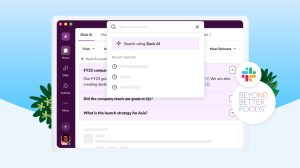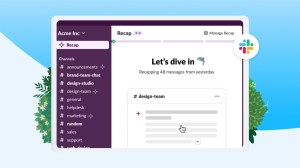Developers are the force behind every company’s ability to innovate and thrive in our work-from-anywhere world. But with 40% of IT teams being asked to deliver more projects than in previous years with ever-shrinking timelines, companies are putting even more stress on already resource-constrained developer teams.
Several new trends have emerged in response, most notably the increased adoption of automation solutions, as developer teams get creative and leverage impactful, time-saving tools to keep up with demand.
Here’s the key trends we predict will be front and center as 2022 progresses:
Low code and workflow automation
Business leaders from organizations of all sizes will lean more heavily into adopting low-code and workflow automation solutions – both to empower non-technical employees to quickly build problem-solving solutions and save developers valuable time. A recent Salesforce survey found that 93% of automation users viewed the technology more favorably after using it. Low code automation users were also able to achieve a better work life balance thanks to the time-savings provided by things like low-code builders, solutions to design automated workflows with AI integrations, and new capabilities from partnerships like the recently expanded Salesforce and AWS partnership.
Work from anywhere at scale
With our new work-from-anywhere world, digital HQs are now arguably more important than physical offices. That’s why we expect to see an increased use of collaboration platforms like Slack amongst developers to increase communications among colleagues, customers, and partners – no matter where, when, or how they work. And it’s not just us spotting this trend. 79% of IT decision makers say collaboration platforms are very important to their work, with 78% saying they’ll continue to use Slack even when “normal” work routines resume.
With so many employees living in various locations and time zones, collaboration platforms like Slack will be key in ensuring developer teams can efficiently move projects forward and not get bogged down in the inefficiencies of crowded inboxes and lengthy video meetings.
Multi-enterprise developer partnerships
Developers who use services from multiple software providers were tasked with building their own software to ensure apps from one company worked with services from another. As companies look to speed development cycles, we expect much of the time-consuming back-end effort will be made unnecessary by pre-built, low-code applications. In addition, For example, Novartis, a global healthcare company leveraged the data unification capabilities of the Salesforce and AWS partnership to streamline data accessibility and create a holistic view of any doctor via its Health Care Professionals portal – all with just clicks.
The future of medicine and the patient experience are as dependent on technology and innovation as they are on efficiency and speed. Unifying our platforms with Salesforce and AWS gives us the opportunity to optimize our resources and focus our approach by simplifying the customer and developer experience to innovate faster and ultimately improve patient outcomes. It’s how we can reimagine medicine for today and the future.
Victor Bultó, President, Novartis Pharmaceuticals Corporation
Developers at organizations of all sizes will continue to be front and center when it comes to innovation in 2022. As developers continue to look for ways to do more with less in remote environments, trends around low-code builders and getting the most of every partnership will grow in importance, and increasingly be a key to developing and maintaining a competitive advantage.
More information:
Stay up-to-date with the latest Salesforce product news for developers and others by visiting the Salesforce Newsroom here.



















